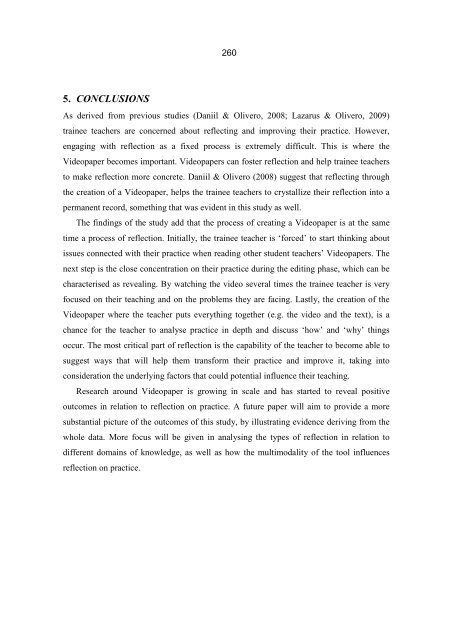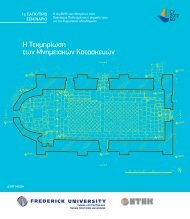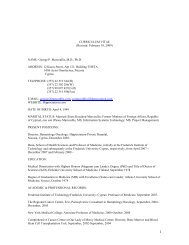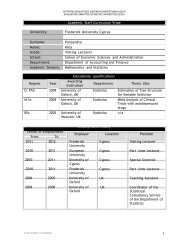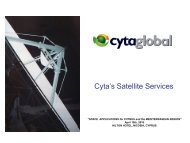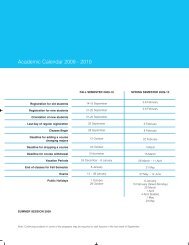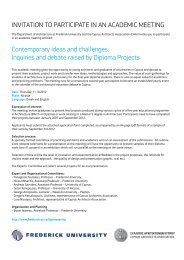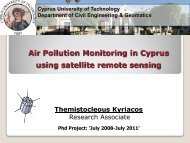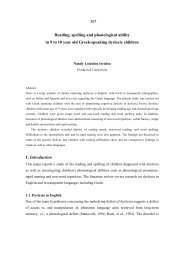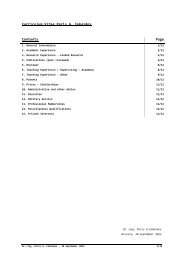Videopaper and teacher education Student teachers create ...
Videopaper and teacher education Student teachers create ...
Videopaper and teacher education Student teachers create ...
You also want an ePaper? Increase the reach of your titles
YUMPU automatically turns print PDFs into web optimized ePapers that Google loves.
5. CONCLUSIONS<br />
260<br />
As derived from previous studies (Daniil & Olivero, 2008; Lazarus & Olivero, 2009)<br />
trainee <strong>teacher</strong>s are concerned about reflecting <strong>and</strong> improving their practice. However,<br />
engaging with reflection as a fixed process is extremely difficult. This is where the<br />
<strong>Videopaper</strong> becomes important. <strong>Videopaper</strong>s can foster reflection <strong>and</strong> help trainee <strong>teacher</strong>s<br />
to make reflection more concrete. Daniil & Olivero (2008) suggest that reflecting through<br />
the creation of a <strong>Videopaper</strong>, helps the trainee <strong>teacher</strong>s to crystallize their reflection into a<br />
permanent record, something that was evident in this study as well.<br />
The findings of the study add that the process of creating a <strong>Videopaper</strong> is at the same<br />
time a process of reflection. Initially, the trainee <strong>teacher</strong> is ‘forced’ to start thinking about<br />
issues connected with their practice when reading other student <strong>teacher</strong>s’ <strong>Videopaper</strong>s. The<br />
next step is the close concentration on their practice during the editing phase, which can be<br />
characterised as revealing. By watching the video several times the trainee <strong>teacher</strong> is very<br />
focused on their teaching <strong>and</strong> on the problems they are facing. Lastly, the creation of the<br />
<strong>Videopaper</strong> where the <strong>teacher</strong> puts everything together (e.g. the video <strong>and</strong> the text), is a<br />
chance for the <strong>teacher</strong> to analyse practice in depth <strong>and</strong> discuss ‘how’ <strong>and</strong> ‘why’ things<br />
occur. The most critical part of reflection is the capability of the <strong>teacher</strong> to become able to<br />
suggest ways that will help them transform their practice <strong>and</strong> improve it, taking into<br />
consideration the underlying factors that could potential influence their teaching.<br />
Research around <strong>Videopaper</strong> is growing in scale <strong>and</strong> has started to reveal positive<br />
outcomes in relation to reflection on practice. A future paper will aim to provide a more<br />
substantial picture of the outcomes of this study, by illustrating evidence deriving from the<br />
whole data. More focus will be given in analysing the types of reflection in relation to<br />
different domains of knowledge, as well as how the multimodality of the tool influences<br />
reflection on practice.


